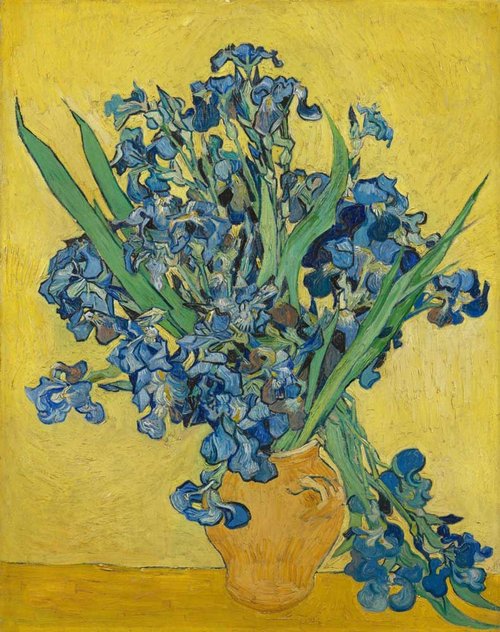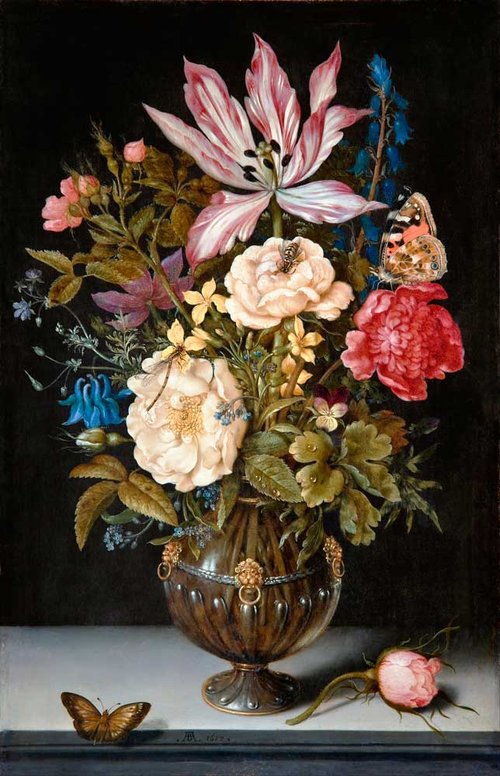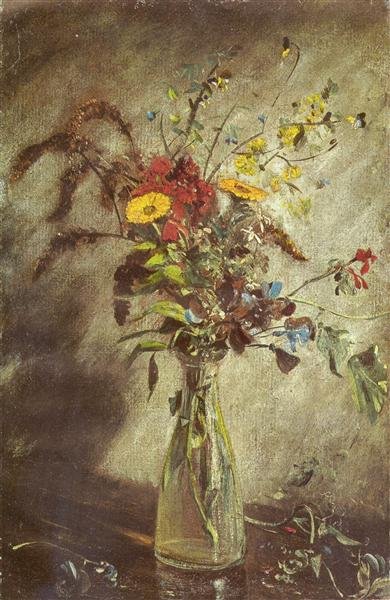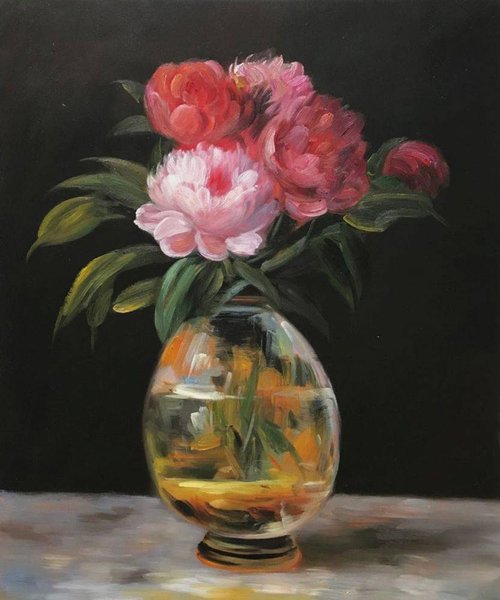Few posts back we already mentioned floral paintings but you can never stop talking about flowers and there is so much to show.
During the whole history of Art flowers were one of the most prevalent themes for artists.
Painters found their style, voice and meaning of their art while showing people floral beauty.
The paintings below are reminders of how much nature has to offer and that some of the best inspiration comes from what you can find in your garden.
Flowers in a Glass Vase, with a Cricket in a Niche by Rachel Ruysch (1700)

Rachel Ruysch was not only the most famous female artist of the Dutch Golden Age, but also elevated flower paintings to another level.
Rachel Ruysch discovered her own style, abandoned traditional still-life composition and made her bouquets asymmetrical, dynamical.
Her detailed, dynamic still-life made her famous and gave Ruysch an opportunity to do what she loved for 60 years.
Water Lilies by Claude Monet (1908)

How can you say something about art and flowers without Water Lilies? There are more than 205 paintings in the series, many of which were created after he began to have vision problems. Monet worked on them for 30 years.
Still Life with Irises by Vincent van Gogh (1890)

There are many famous flower paintings by Vincent van Gogh to choose from (there were two in a previous post, after all). Than why Still Life with Irises?
Painted by van Gogh while he was undergoing treatment in a psychiatric hospital, this still life is great for it’s bold, contrasting colors.
Still-Life with Flowers by Ambrosius Bosschaert (1617)

In times when religious and historical paintings were the pinnacle of art, portraits and still life were considered a “cheap” art for those who lack talent and, of course, ladies. The public, critics and other artists began to change their attitude towards still life in the 16th and 17th centuries, along with the Dutch Golden Age.
Ambrosius Bosschaert was a Dutch still life painter known for his scientific accuracy. He was one of the first artists to focus on painting bouquets.
Flowers in a Glass Vase by John Constable (1814)

English Romantic painter John Constable is well-known for his landscape paintings. By the time John Constable was practicing his art, flower paintings were already an integral part of the artistic tradition. Therefore, John Constable, like many artists before and after him, tried his hand at floral still life. Flowers in a Glass Vase is an oil study painted on millboard. And John Constable would be a bad Romantic painter if he had not added drama to his still life. Dark, muted tones are balanced with red and yellow flowers and there is so much drama in the contrast of light and shadows; in dying flowers on the table.
Roses and Lilies by Henri Fantin-Latour (1888)

French painter Henri Fantin-Latour, unlike John Constable, did not experiment with flowers, but devoted his career to them. Realist and conservator in Art in times when Impressionism was gaining popularity, he worked wonders with composition and color. In Roses and Lilies, Fantin-Latour used the long stems of the lilies to cut across the canvas, balancing the petit bouquet of roses on the table. With pink hues he softened the contrast between white flowers and the deep brown of the wood table.
Bouquet of flowers by Edouard Manet (1882)

Free and dynamic brushstrokes give his painted flowers an ephemeral feel. Manet was a lover of flowers and painted them quite frequently. Flowers were so important for the painter that for the last six month of his life and work he painted only floral still lifes.